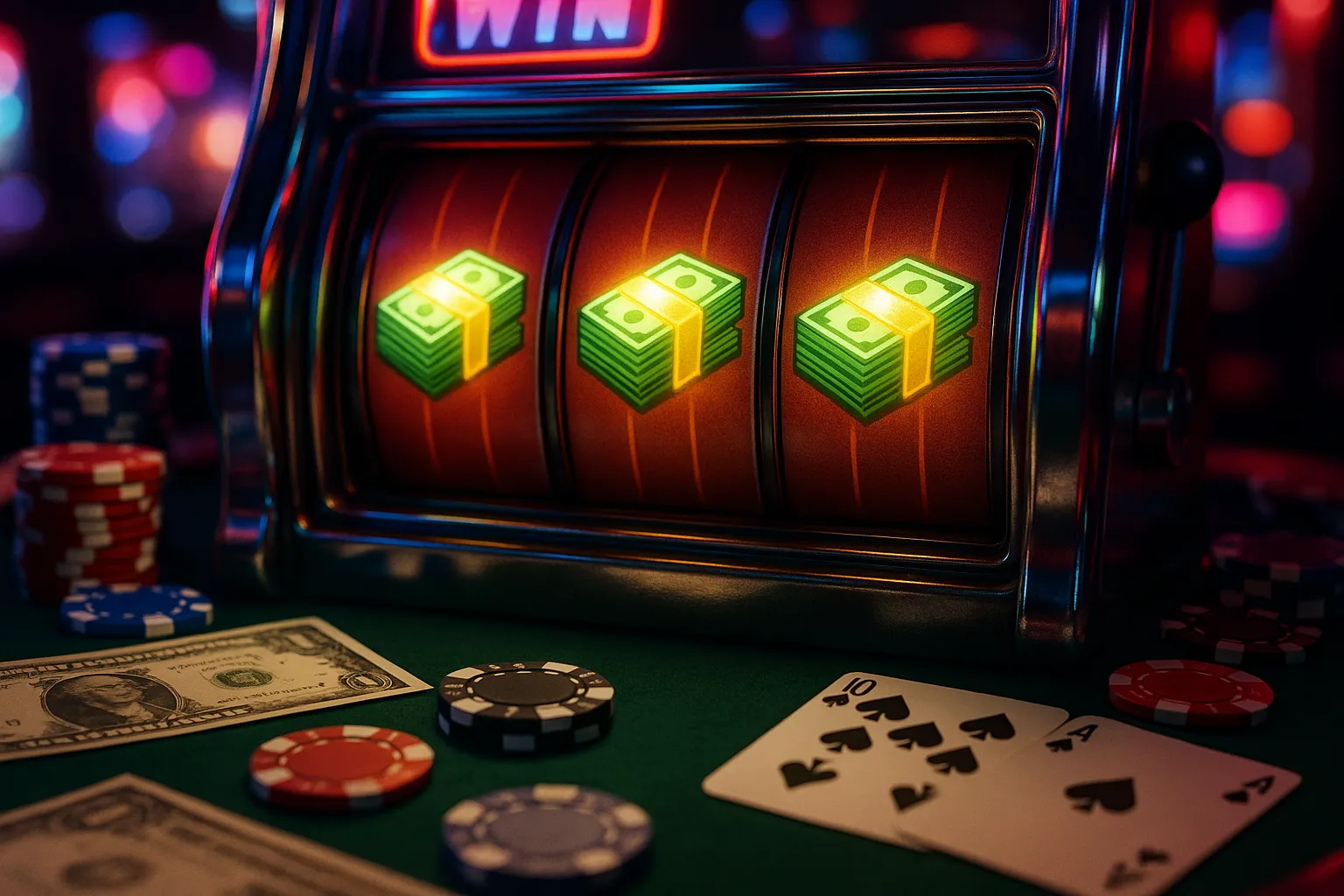The modern slot landscape has exploded with new mechanics, and one that keeps surfacing—sometimes under different marketing names—is the idea of matching or collecting cash symbols (coins, money values, prize orbs) on the reels. Players ask me constantly: “Why does this game want me to match or gather cash icons if they aren’t traditional line symbols?” Understanding why these symbols matter (and how they influence volatility, feature frequency, psychological pacing, and bankroll planning) turns a seemingly simple design embellishment into a strategic lens for smarter play.
At its core, a “cash symbol” is a reel icon carrying an explicit numerical value or a conditional prize (mini, minor, major, grand). Unlike standard payline symbols that must align adjacently, cash symbols usually participate in a collect or hold-and-win style mechanic: land enough of them in one spin (or in a locked bonus grid) and you receive the sum, multiplier conversions, or jackpots. Sometimes a separate “collector” symbol must appear simultaneously; sometimes merely reaching a threshold quantity (e.g., six coins) triggers a bonus board. When you understand the purpose behind this layer, you can evaluate a game faster than just spinning and hoping.
From Hidden Line Math to Transparent On-Symbol Value
Traditional slot learning requires mapping icon → paytable row → required adjacency → total bet multiplier. Cash symbols compress steps: the numerical value (or clearly labeled mini/major) sits on the reel. That transparency reduces onboarding friction. New players who might otherwise bounce during paytable digestion stay engaged because value decoding becomes intuitive—“three 15× coins plus a collector gave me 45×”—no mental translation required. Transparency increases perceived fairness: you knew what you were chasing mid-spin.
In the broad marketplace—including regulated brands and alternative venues sometimes grouped under casinos not on GamStop—cash symbol mechanics rely on the same foundational rationale: communicate potential in a visually tangible denomination. A visible “50×” coin is a promise you can instantly decode; line symbols hide their eventual payout behind a paytable and adjacency conditions. Designers leverage cash symbols to lower cognitive friction, escalate anticipation, diversify volatility, and align with responsible disclosure goals (you see value before you win it).
Driving Dual-Layer Volatility
Cash symbols introduce micro jackpots within the base game or feature. Even modest denominations keep a spin feeling “alive” when line potential fizzles early (e.g., dead first reel). Volatility becomes dual-layered: (1) ordinary line/ways/cluster results, and (2) episodic cash symbol aggregations. Designers tune frequency and average value of cash occurrences to fine-shape dispersion: frequent low coins flatten variance; sparse high-value tokens sharpen peaks. Matching or collecting them is the mechanism that lets you experience designed variance without fully understanding the math.
Threshold Mechanics and Psychological Momentum
Threshold triggers (e.g., “Land 6 money symbols to start Hold & Spin”) create a progressive tension curve. Each cash icon that drops shifts you from hope to proximity. Once the threshold is reached, the emotional focus pivots to retention (three respins resetting) and expansion (filling all positions for an extra jackpot). Matching additional cash values after threshold becomes a ladder climb rather than a simple binary success. This layered momentum sustains engagement ethically by revealing concrete, rule-based progress.
Collector Symbols and Conditional Completion
Many games pair cash icons with a collector (chest, bag, sheriff badge). Mechanically, the collector functions like a scatter that enables stored value. Without it, coins are inert placeholders generating near-miss tension. This design lets studios safely show large coins more often (visual excitement) while controlling actual payout frequency (collector scarcity). For players, recognizing collector probability relative to coin density clarifies whether big visible values are tease-weighted or realistically attainable. Matching cash symbols is only financially meaningful if the enabling condition’s rate supports fair realization.
Hold-and-Win Grids: Contained Risk Windows
Once enough cash symbols land to trigger a hold-and-win (or “lock and respin”) feature, regular line evaluation pauses and you enter a controlled micro-economy: only cash values (and modifiers) matter. The grid isolates variance into a short, intense window—three respins, each new cash symbol resetting the counter. Matching (i.e., adding) symbols extends temporal exposure to upside while capping downside (you can’t lose more than your triggering spin stake). This framing shifts risk perception: players feel empowered to “defend” their current haul by landing just one more symbol. The mechanic cleverly transforms random continuation into an apparent skill-like sustain, even though probability remains fixed.
Incremental EV Signaling Through Visual Density
A screen scattered with mixed-sized cash values signals latent expected value (EV) potential. Even if you don’t calculate exact odds, human pattern recognition interprets density as promise. Designers tune reel strips to provide periodic value clustering—bursts where multiple coins appear—juxtaposed with lean intervals. This fosters a rhythm: drought tension followed by a rich visual board that rekindles enthusiasm. Matching coins during clusters often feels more achievable, yet statistically the collector or threshold still governs results. Recognizing this helps you contextualize excitement without overextending bankroll.
Jackpot Labels and Hierarchical Goals
When cash symbols can randomly display “Mini,” “Minor,” “Major,” “Grand,” matching them becomes a hierarchy of aspiration. You’ve got immediate base-level sums plus occasional high-tier tokens. Hierarchy moderates disappointment: missing the grand but landing supplementary smaller coins still feels like layered success. For designers, labeled jackpots compartmentalize variance: base game still circulates small returns (sustaining session length) while rare top-tier conversions preserve headline potential. Understanding this structure helps you calibrate expectations—your long-run session ROI leans on frequent small-to-mid cash realizations, not relentless grand jackpot attempts.
Interaction with Multipliers and Boosters
Some engines introduce multiplier symbols that, when matched with existing cash icons, multiply all visible values or specific subsets (row, column, color-coded group). Matching cash symbols therefore sets a base that later modifiers amplify. Strategic implication: a bonus entering with more pre-multiplier coins has disproportionately higher ceiling if a global multiplier lands. For players, this means early coin accumulation inside the bonus is worth celebrating even before multiplier confirmation. Bankroll planning: accept slightly longer dry base sequences if the game’s design shows strong amplifier synergy (frequent multipliers that reward dense early boards).
Temporal Design: Persistent and Progressive Cash Meters
Some titles let cash symbols persist across spins (e.g., collecting nuggets toward a super feature). Matching is no longer single-spin but session-aggregate. This transforms cash icons into progress currency. Psychological risk arises: sunk cost bias (“I’ve banked 80%; I must finish”). Mitigation tactic: predefine a ceiling—if expected remaining spins to completion exceed bankroll tolerance, exit rather than chasing completion at negative expected incremental value. Deliberately reframing persistence as optional value, not obligatory mission, preserves discipline.
Comparing Cash Symbols to Traditional Lines
Why not rely solely on line wins? Lines hide value until resolution; cash icons pre-announce potential. This pre-announcement is especially sticky on mobile, where quick play sessions demand immediate interpretability. Additionally, line wins are constrained by adjacency and reel order. Cash symbol matching sidesteps adjacency, offering pattern independence that keeps late reels meaningful. This combats “dead spin fatigue,” the feeling you get when reel one misses a needed high symbol and the remainder of the spin feels perfunctory.
Reading Paytables Efficiently
When opening a new game, scan these cash-related elements first: threshold count, collector requirement, jackpot hierarchy, multiplier interaction, persistence rules. This quick triage tells you volatility flavor: low threshold + modest jackpots = smoother curve; high threshold + amplifying multipliers + large jackpots = spikier distribution. Adjust stake accordingly: lower stake for elongated cycles chasing rare amplifiers; moderately higher stake when returns spread more evenly over frequent mini collections.
Avoiding Cognitive Traps
Visible large values trigger salience bias: the 200× coin looms larger in memory than repeated 5× hits actually sustaining your session. Track actual realized sources of profit in a simple log (spin number, feature trigger, total cash collection). After a few sessions you’ll notice net results are predominantly small-to-mid cash aggregates, not singular giant coins. This recognition discourages over-chasing improbable single-token outcomes and encourages a bankroll plan oriented around realistic return drivers.
Responsible Engagement and Emotional Regulation
Cash symbol mechanics are intentionally tactile—they look collectible, sometimes animate pulsing glows, emit counting sounds when matched. Treat these cues as entertainment overlays, not predictive signals. Establish stop-loss and stop-win boundaries before starting. If you feel escalating stake impulses after near-miss clusters (e.g., many coins without collector), institute a timed pause. The mechanic’s transparency (values shown upfront) is a strength; pair it with deliberate pacing to keep experiences positive.
Practical Session Framework
Start by estimating feature frequency (community data, review sites, or personal tracking). Suppose threshold-trigger hold-and-win features average every 140 spins. Ensure bankroll supports at least two cycles at your chosen stake to buffer variance. Inside the feature, prioritize retention mindset: each new matched coin resetting respins extends optionality for multipliers and jackpots. Post-feature, reassess: did realized average coin values align with visible distribution? If consistently lower, variance may simply be unfolding normally—resist the gambler’s fallacy of “due improvement.” Adjust stake only if bankroll trajectory demands risk reduction, not as an emotional reaction.
Future Evolution of Cash Matching
Expect more layered synergy: cash symbols that unlock secondary wheels, coins that morph into persistent boosters after collection, or adaptive thresholds during promotional windows (e.g., temporary “5 coins trigger” event). Transparency pressure will likely push UI toward dynamic infographics showing how your current board’s summed potential changes if a multiplier lands. The fundamental appeal—instantly readable, stackable value—will stay central.
Final Perspective: Why Match Cash Symbols?
Because they collapse complexity into immediacy. Matching cash symbols converts hidden mathematical expectation into visible, graspable stakes in real time. They diversify volatility, sustain spin-to-spin tension, enable hierarchical goal framing, and support responsible clarity by showing potential before outcome resolution. For players who engage thoughtfully—scanning thresholds, calibrating stake to feature cycle length, logging realized vs. visualized value—cash symbol mechanics become less about impulsive chase and more about structured entertainment within known probabilistic boundaries. In an attention-scarce gaming environment, that blend of transparent promise and episodic excitement explains exactly why the industry doubled down on matching cash symbols—and why understanding them elevates your strategic enjoyment every session










